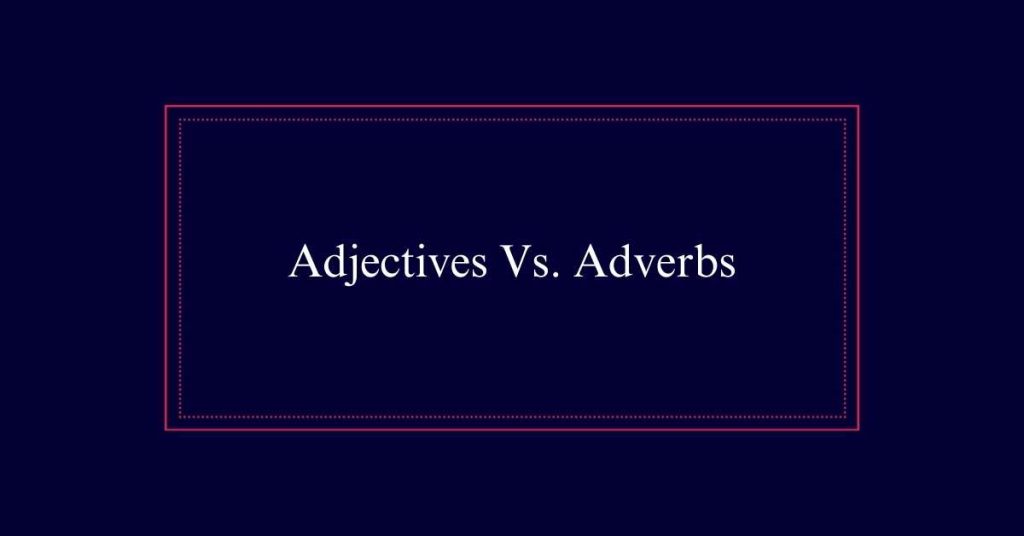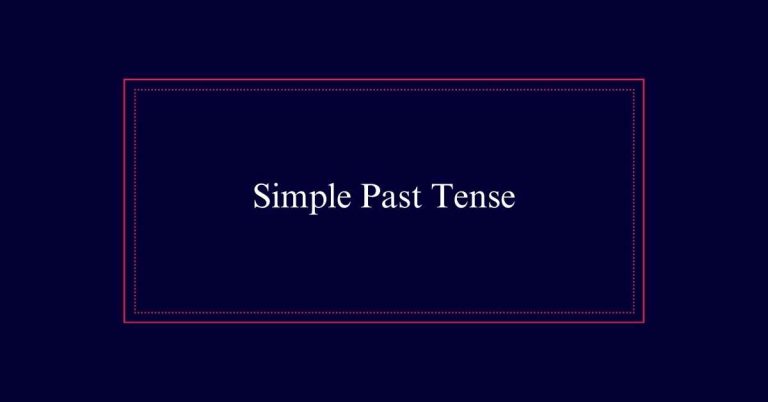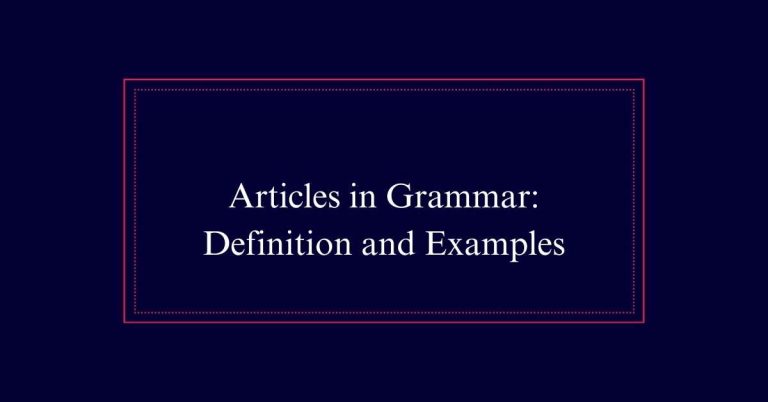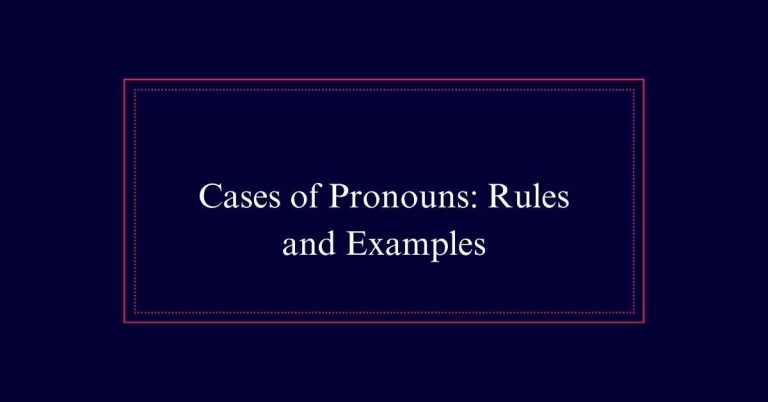Adjectives Vs. Adverbs
Adjectives describe qualities, quantities, or states of being of nouns and pronouns, like size, color, or age. They provide specific details and usually come before or after nouns. Adverbs, on the other hand, describe how, when, where, or to what degree actions occur, adding depth to verbs, adjectives, or other adverbs.
Adjectives: Describing Nouns
Adjectives are essential words that provide specific details about nouns. They enhance descriptions, making communication clearer and more vivid.
For example, in the phrase ‘red apple,’ the adjective ‘red’ describes the noun ‘apple,’ providing a clearer picture. Adjectives can describe qualities, quantities, or states of being. They can indicate size, color, age, shape, and more.
For instance, ‘happy dog,’ ‘three cars,’ and ‘ancient ruins’ all use adjectives to provide more information about the nouns. Adjectives often come before the nouns they modify but can also follow linking verbs, as in ‘The sky is blue.’
Adverbs: Describing Actions
Adverbs are essential for describing how actions are performed, adding depth to verbs. They provide clarity by specifying the manner, time, place, or degree of an action. For example, in the sentence ‘She sings beautifully,’ the adverb ‘beautifully’ describes how she sings.
Here are four key functions of adverbs:
- Manner: Describes how an action is done (e.g., quickly, slowly).
- Time: Indicates when an action occurs (e.g., yesterday, now).
- Place: Specifies where an action takes place (e.g., here, everywhere).
- Degree: Shows the intensity or extent of an action (e.g., very, quite).
Special Adverbs
Special adverbs add nuance and emphasis to sentences, often modifying adjectives or other adverbs to enhance meaning. These adverbs, such as ‘really,’ ‘very,’ and ‘extremely,’ intensify the words they modify.
For example, in ‘She runs very quickly,’ the word ‘very’ heightens the speed described by ‘quickly.’ Special adverbs can also soften the intensity, as in ‘somewhat tired’ or ‘slightly annoyed.’ They play an important role in conveying the speaker’s exact feeling or the degree of an action or quality.
Adverbs Describing Adjectives
Modifying adjectives with adverbs can provide more precise descriptions in your writing. Adverbs can change the intensity or quality of an adjective, offering clearer insights.
For example, consider the phrases ‘very beautiful’ or ‘extremely cold.’ Here, the adverbs ‘very’ and ‘extremely’ modify the adjectives to convey a stronger sense of beauty and coldness.
When using adverbs to describe adjectives, keep in mind the following:
- Intensity: Adverbs like ‘very’ or ‘quite’ can amplify adjectives.
- Degree: Words like ‘slightly’ or ‘almost’ can reduce the degree of the adjective.
- Frequency: Adverbs such as ‘often’ or ‘rarely’ describe how often an adjective applies.
- Certainty: Terms like ‘certainly’ or ‘possibly’ can indicate certainty levels.
Identifying Adjectives Vs. Adverbs
Identifying whether a word is an adjective or an adverb involves understanding its role in the sentence. Adjectives describe nouns and pronouns, providing details like color, size, and quantity. For example, ‘The red apple’ uses ‘red’ as an adjective to describe the noun ‘apple.’
Adverbs, on the other hand, modify verbs, adjectives, or other adverbs, often describing how, when, where, or to what extent an action occurs. For instance, “She runs quickly” uses ‘quickly’ as an adverb to describe the verb ‘runs.’
Linking Verbs Explained
Linking verbs connect the subject of a sentence to additional information about that subject. Unlike action verbs, linking verbs do not show action. Instead, they link the subject with a word that describes or identifies it. Common linking verbs include forms of ‘to be’ (am, is, are, was, were), ‘seem,’ ‘become,’ and ‘appear.’
Here are key points about linking verbs:
- No Action: They do not show action but link to more details.
- Subject Connection: They connect the subject to a description or identifier.
- Common Examples: Include ‘am,’ ‘is,’ ‘are,’ ‘was,’ and ‘were.’
- State of Being: They often describe a state of being or condition.

Adjectives With Linking Verbs
Adjectives are used with linking verbs to provide descriptions or additional information about the subject. Linking verbs, such as ‘is,’ ‘seems,’ and ‘becomes,’ do not show action but connect the subject to more details. These verbs necessitate adjectives, not adverbs, for accurate description. For example, ‘The soup smells delicious’ uses the adjective ‘delicious’ to describe the soup.
Here is a table to illustrate common linking verbs and their adjective uses:
| Linking Verb | Example Sentence |
|---|---|
| is | The sky is blue. |
| seems | She seems happy. |
| becomes | He becomes tired quickly. |
| feels | The fabric feels soft. |
Adverbs With Linking Verbs
Adverbs are not typically used with linking verbs, as linking verbs describe the subject rather than an action. Linking verbs, such as ‘is,’ ‘seems,’ ‘feels,’ and ‘becomes,’ connect the subject to a description or state of being.
Therefore, adjectives are preferred to describe the subject. For example, ‘She seems happy’ is correct, while ‘She seems happily’ is not.
Here are key points to remember:
- Linking verbs describe the subject, not an action.
- Adjectives follow linking verbs to describe the subject.
- Using adverbs with linking verbs is generally incorrect.
- Common linking verbs include ‘am,’ ‘is,’ ‘are,’ ‘was,’ and ‘were.’
Forming Adverbs From Adjectives
Many adjectives can easily be converted into adverbs by adding the suffix ‘-ly.’ For instance, ‘quick’ becomes ‘quickly’ and ‘happy’ becomes ‘happily.’
If the adjective ends in ‘e,’ drop the ‘e’ and add ‘-ily,’ as seen in ‘gentle’ becoming ‘gently.’
Adjectives ending in ‘-ble’ or ‘-tle’ change to ‘-bly’ or ‘-tly,’ like ‘comfortable’ turning into ‘comfortably.’
Some adjectives require adding ‘-ally’ to form adverbs, such as ‘basic’ becoming ‘basically.’
However, there are exceptions to these rules. Not all adjectives follow these patterns, and some adverbs do not end in ‘-ly.’ Understanding these exceptions is essential for accurate language use.
Identical Adjective and Adverb Examples
In addition to forming adverbs from adjectives, some words serve as both adjectives and adverbs without any modification. These words are context-dependent and do not change form to indicate their function. For example, the word ‘fast’ can describe both a noun and a verb.
Here are four examples of identical adjectives and adverbs:
Hard:
- ‘He works hard’ (adverb)
- ‘The task is hard’ (adjective).
Fast:
- ‘She runs fast’ (adverb)
- ‘A fast car’ (adjective).
Straight:
- ‘Go straight’ (adverb)
- ‘A straight line’ (adjective).
Wrong:
- ‘You guessed wrong’ (adverb)
- ‘The wrong answer’ (adjective).






